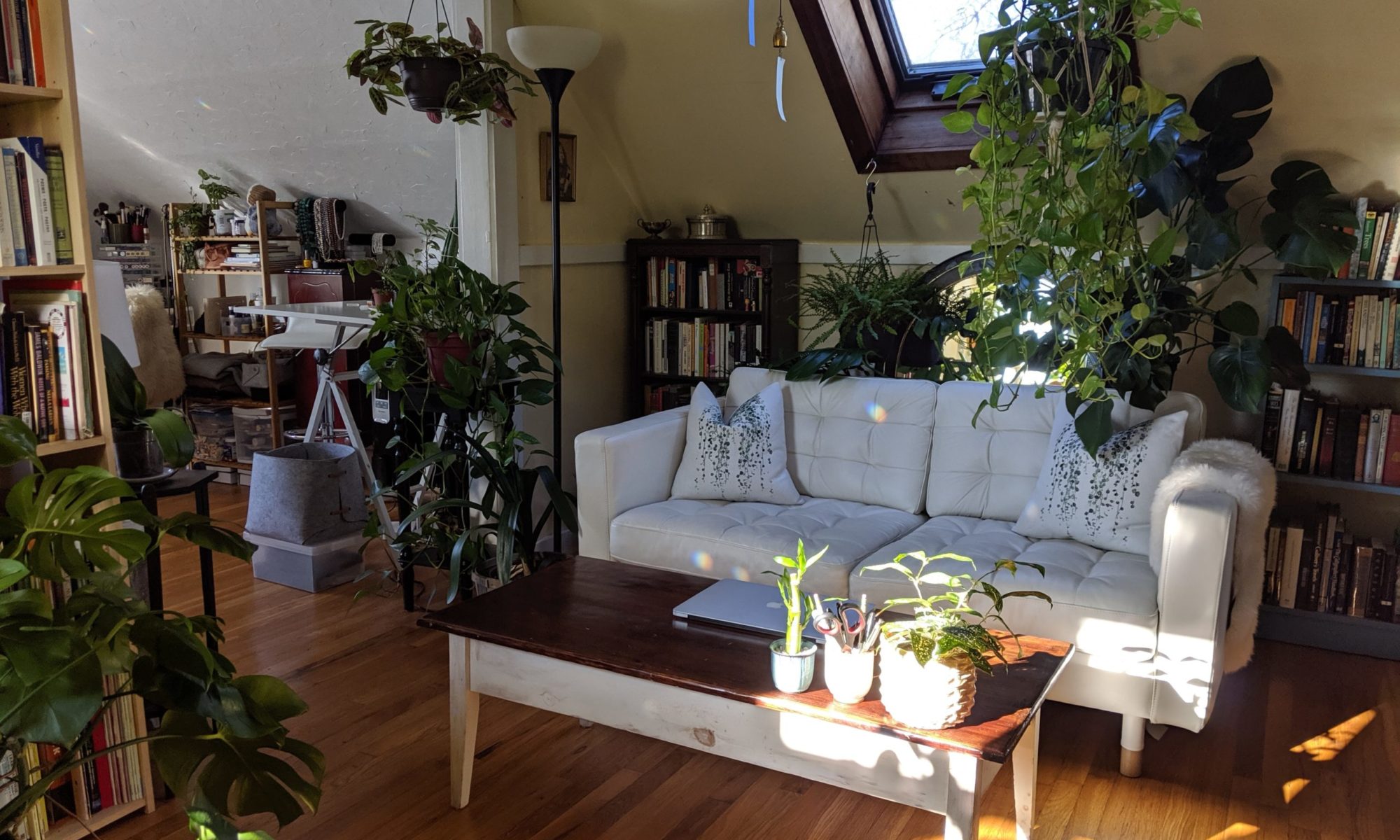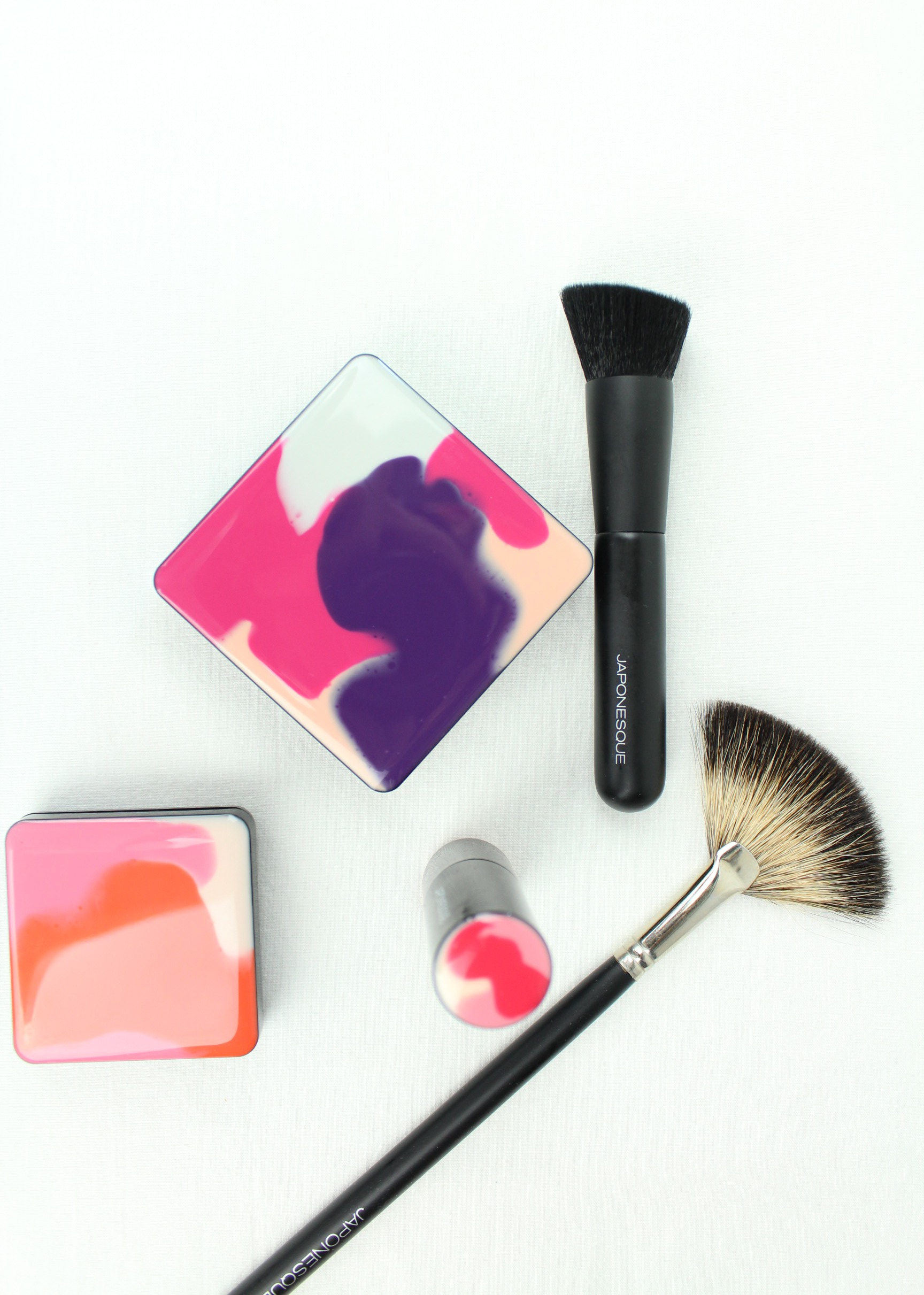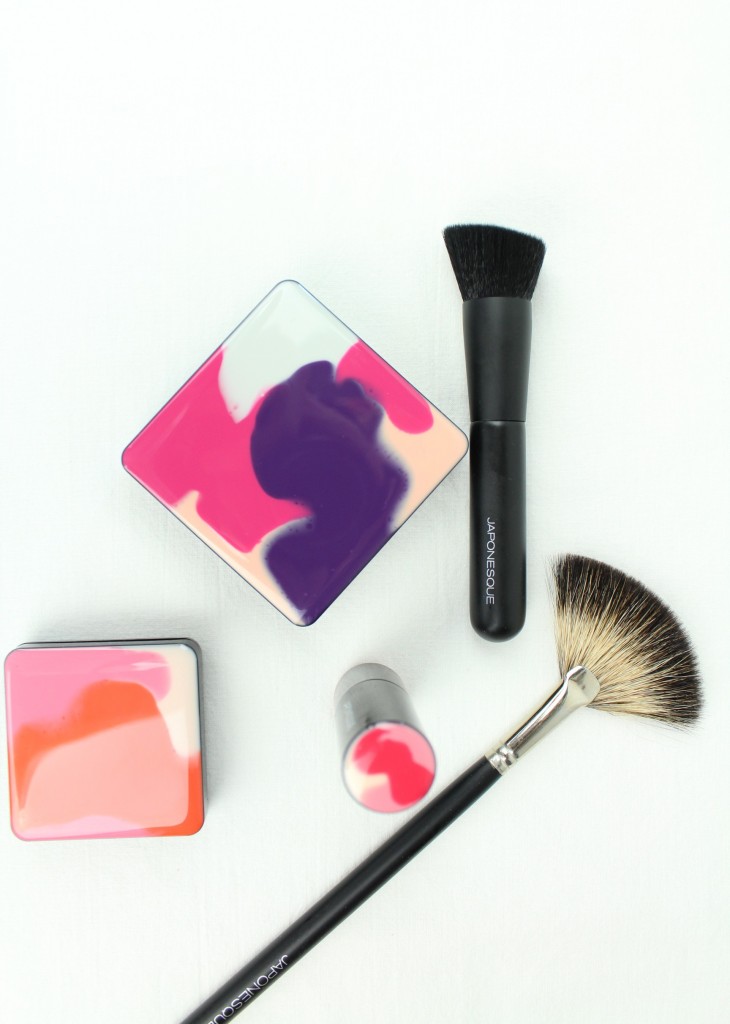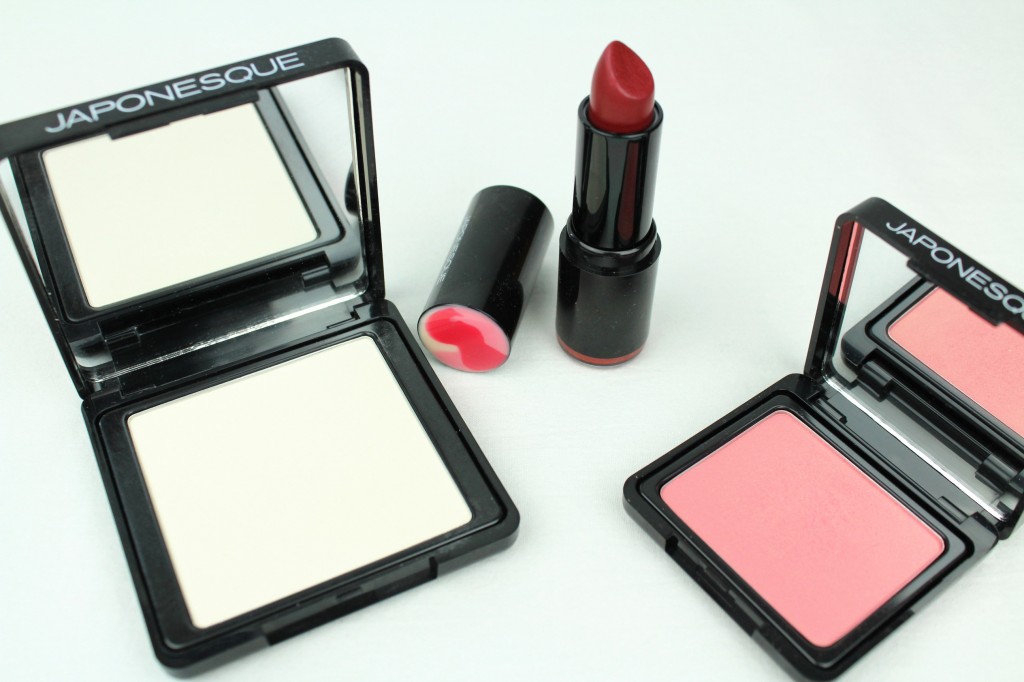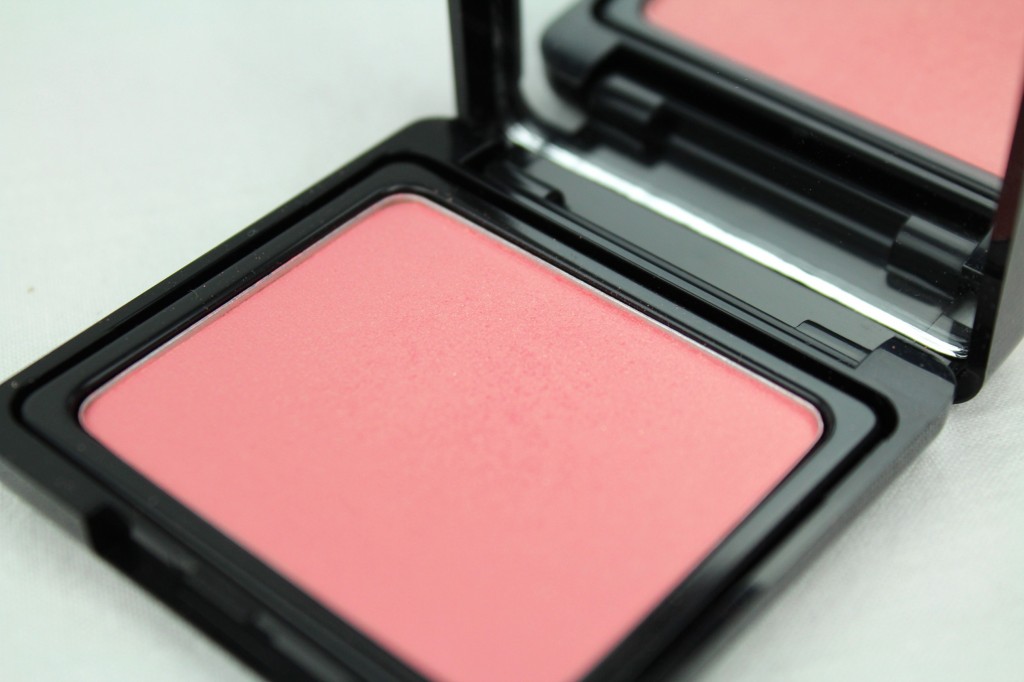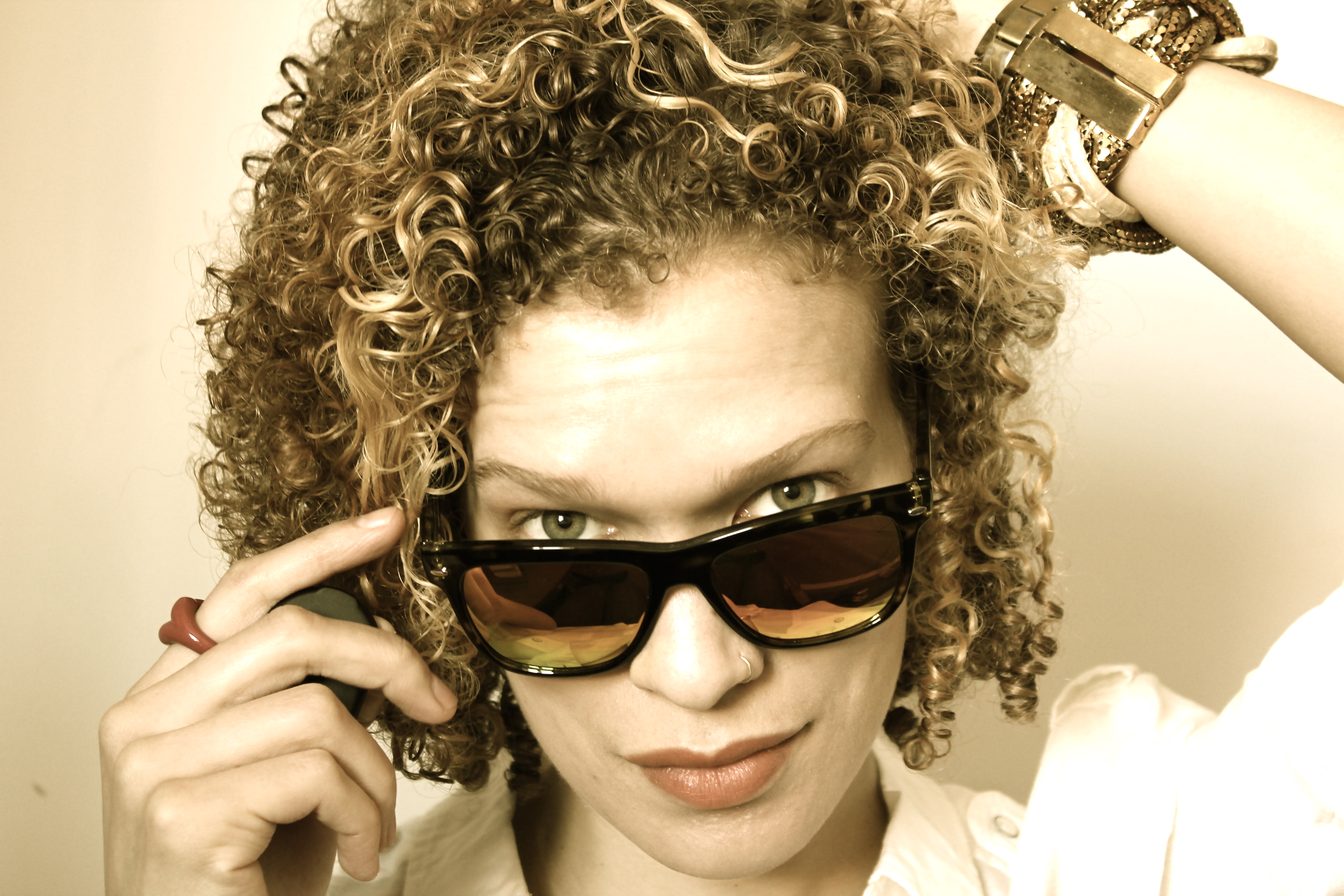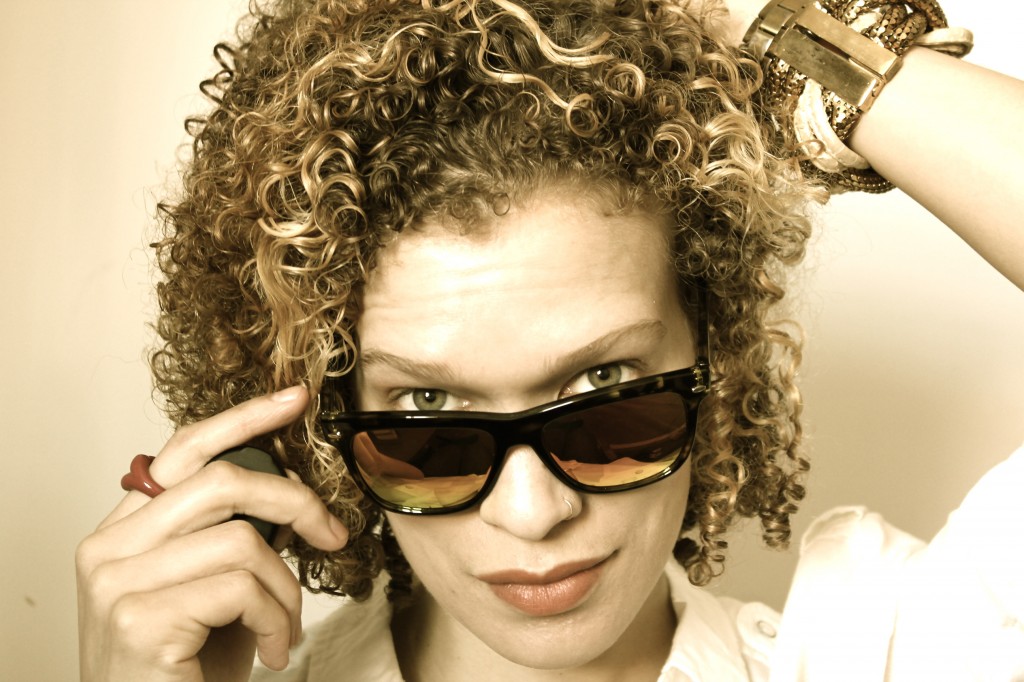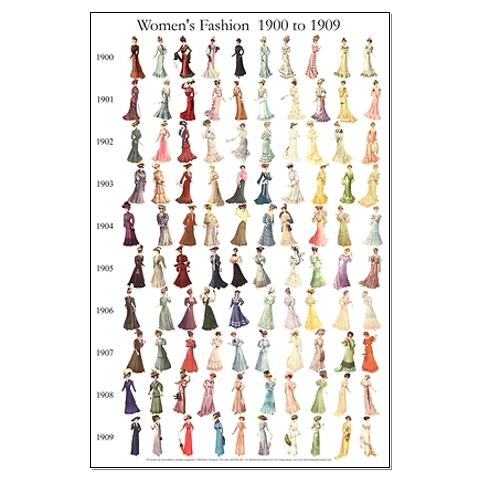Japonesque has long been a manufacturer of professional makeup brushes and tools, for their own brand as well as other high-end brands. An American company out of Northern California (a little over 25 years old now), the name comes from being inspired by the tools of Japanese Kabuki theater (and benefits, no doubt, from the association with Japan, where many sublime brushes are born). It’s a great brand to turn to to get the brushes of the quality that brands like MAC and NARS promise for a bit less (a number of companies doing this well now), and they have a good variety of shapes and sizes.
The general verdict on their makeup line, Japonesque Color (launched last fall), is that the quality of the formulas in the line are solidly good with the exception of the powder products, which are excellent. I realized I was in the market for an excellent powder. And a blush, maybe…
Then of course I got a lipstick, too.
Japonesque Velvet Touch Finishing Powder, Pro Performance Lipstick in Shade 7, Velvet Touch Blush in Shade 3
These powder formulas are indeed excellent. These are finely milled, which is key, and are of that new generation of powders that seem to melt into the skin, serving their function of mattifying or providing a smooth surface for subsequent applications without leaving the impression of a powdered face. Other examples include the Hourglass Ambient Lighting Powder and the Urban Decay Ultra Definition Pressed Finishing Powder (which I haven’t tried, but Sali Hughes gave it a glowing review). I also use and like the Rimmel Stay Matte powder, which is $5 or so and does the job it is meant to do, but these new formulas are in another league altogether in terms of transparency and lightness.
I use this as a transition product between the cream and powder stages of a makeup. Say I want to use a cream illuminator but a powder blush, I apply the cream product, swish some powder (with a brush*) over that area destined for the blush, and am able to apply the blush without getting uneven patches where the skin was more or less dry.
*Not a sponge, which I find applies too much product. These products don’t come with built-in brushes, which I like very much. Let’s all stop pretending I want to have anything to do with those.
The blush is my favorite of the lot, very similar in hue to the Bobbi Brown Pink Coral blush I like so well (fractionally darker), but with fine gold flecks that set it entirely apart. This is Shade 3, a rich cactus flower pink. I am, when browsing for makeup, like someone browsing paint swatches in a hardware store. It often comes down to a matter of color, a visceral affinity for a given color with a background check on the formula and a quick cost/benefit analysis to give the go ahead. I only partially succeed in my attempts to avoid shade duplicates, though I admit I am not always trying very hard, and alternate justifications for acquisition are a dime a dozen.
wearing here
As with the finishing powder it is beautifully sheer and light, and as with the Bobbi Brown blush it instantly brightens the face. The shimmer is subtle and fine, and I am for it. The formula is as beautiful as blushes twice the price*, and I think these powder products are offer great value for money. The lipstick I truly did not need, and it is good. It is not so mind-blowingly good that I would exactly recommend it at this price, but it is good. I took care to select a shade not yet represented in my stash, and I have no regrets.
*Though there are also blushes nearly as nice for half of the price, or a quarter of the price. And to be nearly as nice as something unnecessarily nice…is often nice enough. What I tend to turn to higher end brands for, beyond exceptional textures (drugstore and budget brands offer many great formulas now, and excellent ones here and there), is a compelling color range.
Then, a fan brush. I’ve been wanting a fan brush, you see. They are notoriously good at sweeping highlighter over the cheekbones. While it does do this, and is a great balance of stiff and flexible, for me it is mostly for show. Let’s face it, it’s beautiful. I’ve been hearing great things about this Eco Tools fan brush, too. The position of fan brush has been filled now but still kind of want to check it out…
[The other brush pictured is an angled kabuki-style buffing thing, a gift with purchase. It buffs. I like it, but I like the Real Techniques Expert Face Brush better.]
